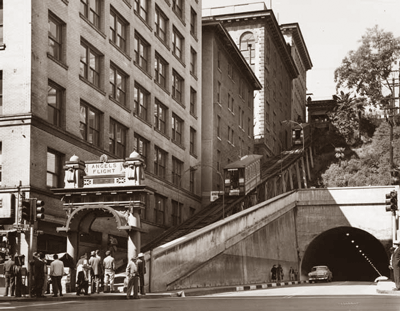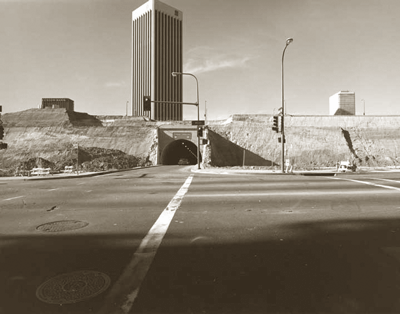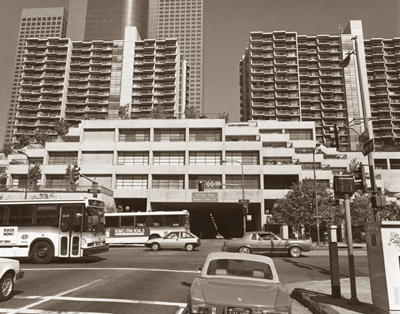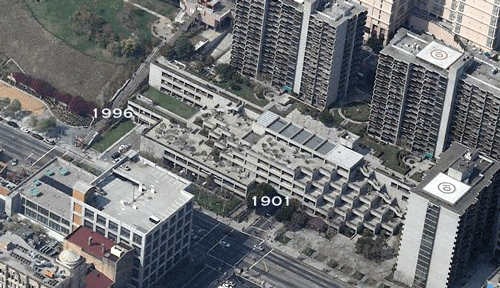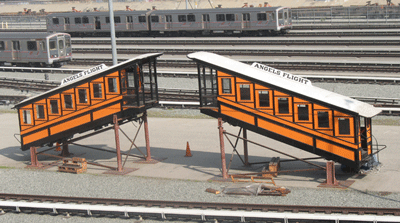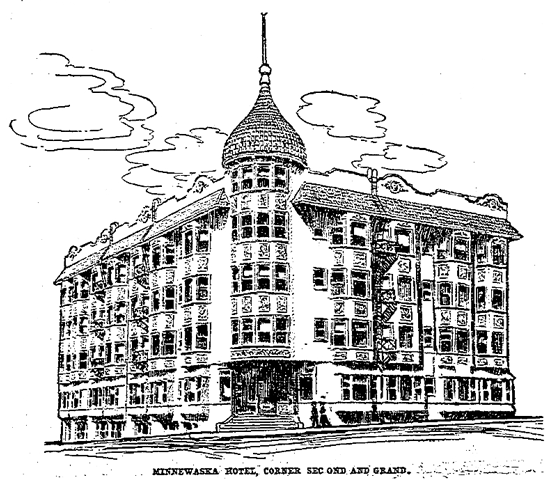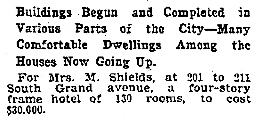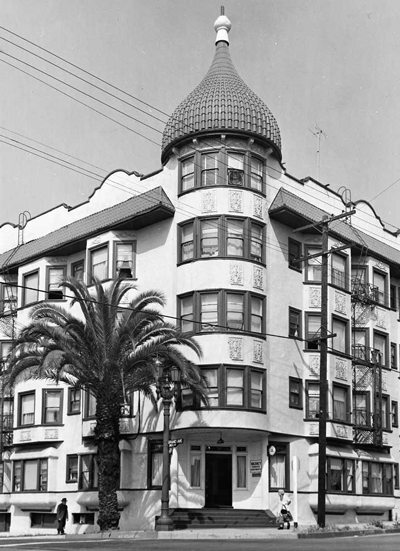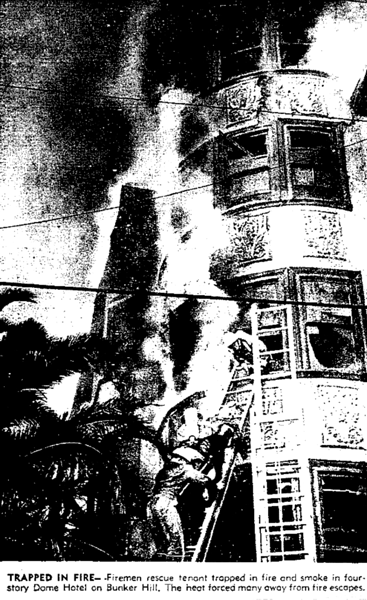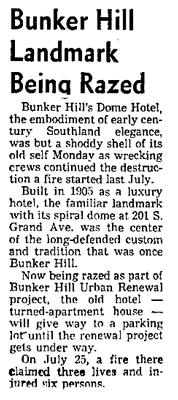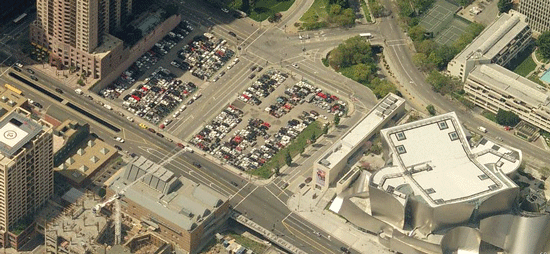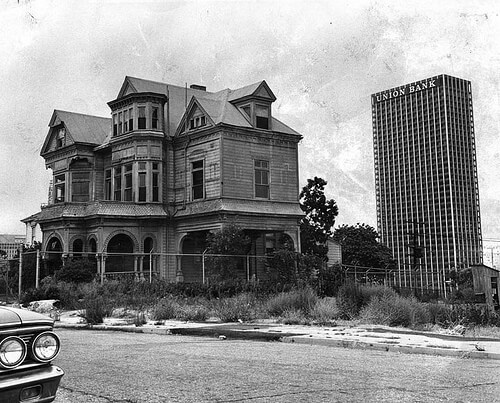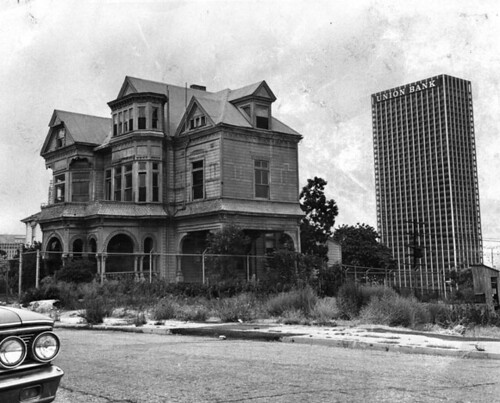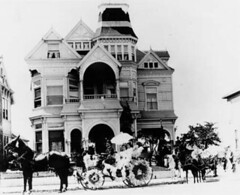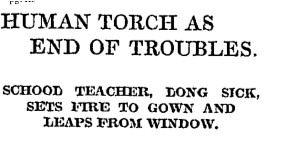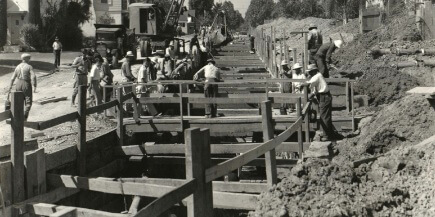Location: 400 block of Beaudry Avenue
Date: February 26, 1996
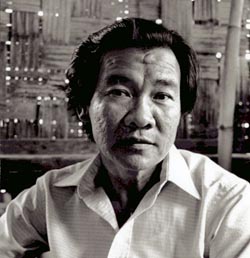 Cambodian actor Haing Ngor, best known for his Oscar-winning performance in the 1984 film The Killing Fields, was gunned down last night outside his modest apartment building on the 400 block of Beaudry Avenue. L.A. police officers say his body was found next to his gold, late model Mercedes in the open parking garage; he was apparently shot as he arrived home. Investigators say they have no suspects or motive in Ngor”™s killing; Ngor carried a wallet and money, but neither was taken. Relatives and friends speculate that the killing was revenge for his continued opposition to the Khmer Rouge.
Cambodian actor Haing Ngor, best known for his Oscar-winning performance in the 1984 film The Killing Fields, was gunned down last night outside his modest apartment building on the 400 block of Beaudry Avenue. L.A. police officers say his body was found next to his gold, late model Mercedes in the open parking garage; he was apparently shot as he arrived home. Investigators say they have no suspects or motive in Ngor”™s killing; Ngor carried a wallet and money, but neither was taken. Relatives and friends speculate that the killing was revenge for his continued opposition to the Khmer Rouge.
Haing Ngor”™s life was as dramatic ”“ and tragic ”“ as any found on the silver screen. Born in 1940, Ngor was trained as a physician and was practicing as a gynecologist in Cambodia at the time the Khmer Rouge came to power in 1975. Under the guise of ridding Cambodia from foreign influence, the Khmer Rouge targeted for execution every educated Cambodian, anyone who spoke a foreign language, ex-soldiers and their relatives, even people who wore eyeglasses. The majority of the population ”“ all those who had not lived under the Khmer Rouge”™s control before it took power in 1975 ”“ were classified as ”˜”™new”™”™ people and reduced to the status of war slaves. Ngor was captured, tortured, and starved for four years. He survived by masquerading as a taxi driver, escaping to Thailand with his six year old niece after Vietnam invaded Cambodia in 1979. A year later, he immigrated to the United States.
Ngor”™s unlikely foray into acting began when he was selected to play Dith Pran, a Cambodian assistant who risked his life to save New York Times correspondent Sydney Schanberg during the Khmer Rouge”™s rise to power. In light of his lack of formal acting experience, Ngor”™s powerful performance stunned many of his professional colleagues ”“ but not the actor himself. The life-and-death training he received during Pol Pots rule, pretending to be someone else, surely honed his acting ability as no stint in Hollywood ever could.
Just how good an actor circumstances forced him to be was painfully illustrated in his 1988 autobiography, Haing Ngor: A Cambodian Odyssey. Fearing for his life if his level of education were revealed, Ngor constantly attempted to disguise his medical knowledge, hiding his glasses and ignoring atrocities in the Khmer camp. He avoided certain death by keeping silent as a fatal dose of the wrong medication was administered to an infant. He betrayed none of the agony he felt as his father was marched off to his death for stealing food. And he witnessed the painful death of his wife and child from a difficult, premature labor, knowing that any attempt to assist her would result in the immediate execution of all three of them. Like many survivors of mass atrocities, Ngor carried the guilt of the living and a responsibility to the dead throughout the remainder of his life.
Haing Ngor”™s scarred hands, with the missing half of his right little finger, were visible evidence of the suffering he endured under Pol Pot”™s regime. Less obvious was his emotional pain, though, that permeated ”“ and inspired ”“ his many successes after the war. It was his promise to his wife that he would bare witness to the Khmer Rouge crimes that fueled his will to survive, and, later, sparked his acceptance of the role that would open the world”™s eyes to Pol Pot”™s monstrosities. He never remarried, wearing a gold locket with the only remaining picture of his wife until the day he died. Perhaps most telling, in spite of his groundbreaking accomplishments as an award-winning actor, author, and human rights advocate, he most identified himself as a survivor of the Cambodian Holocaust.
While sustaining modest success working in various television and movie roles, Ngor continued to work helping improve the conditions in resettlement camps and attempting to bring the perpetrators of the Cambodian massacres to justice. He co-founded two major refugee aid societies and supported two medical clinics and a school in his Southeast Asian home country. He was an example of those survivors who cope most successfully appear to make conscious efforts to interpret their survival as a special obligation to give meaning to their lives, neither denying the trauma of their ordeal or succumbing to it.
Haing Ngor was the first nonprofessional to win an Oscar in 50 years. He was the second Asian actor to win an Academy Award and the first Buddhist. As a Buddhist, Ngor viewed his life according to principals of karma and rebirth, with each reincarnation reflecting the actions, thoughts and beliefs of previous lives. “Maybe in my last life before this one I did something wrong to hurt people,” he once said, “but in this life I paid back.” He also raised the consciousness of us all.


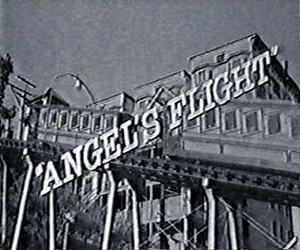


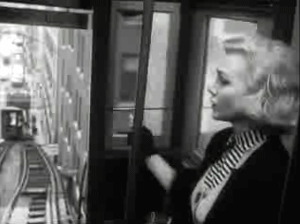
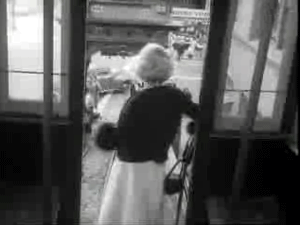

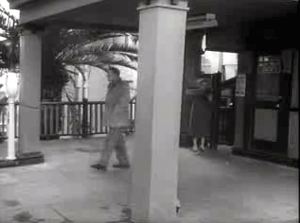
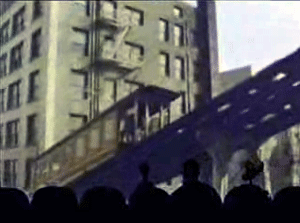
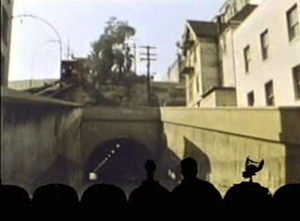

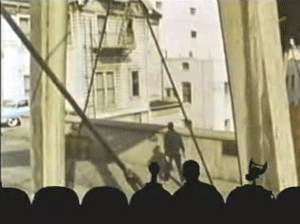
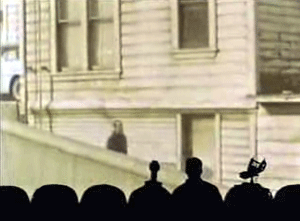
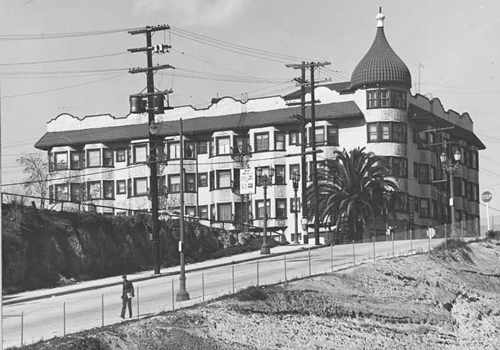

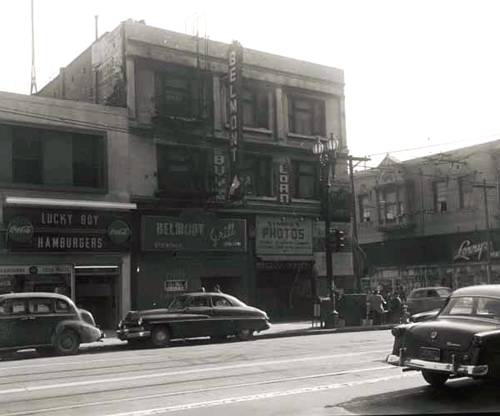
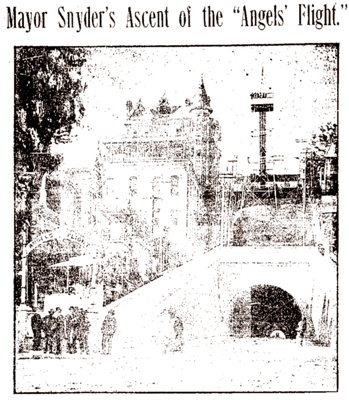

 “Up there‘s Bunker Hill, folks, and what a pain it was to shlep from your gracious home down to the Grand Central Market below, there, behind you. But then came riding up lawyer, engineer, friend of Lincoln, Colonel James Ward Eddy, who was sixty-nine when he convinced the city that it needed a funicular in the 3rd street right-of-way between Hill and Olive. Eddy built ”˜The Los Angeles Incline Railway,‘ known to all and sundry as Angels Flight, no apostrophe thank you, complete with a hundred-foot observation tower that housed a camera obscura. Mayor Snyder made the inaugural 45-second journey on January 1, 1902. The cars were biblically named ”˜Olivet‘ and ”˜Sinai‘ and were painted a saintly white, though later orange and red, and a trip up the 325 feet of 33% grade was originally a penny, though they jacked that up to a nickel. What‘s with the BPOE arch, you ask? Did the Benevolent Protective Order of Elk have a hand in all this? Not really. A hundred years ago the Elk’d go nuts during ‘Elk Week’ and spend lavish sums all over the city with fireworks and
“Up there‘s Bunker Hill, folks, and what a pain it was to shlep from your gracious home down to the Grand Central Market below, there, behind you. But then came riding up lawyer, engineer, friend of Lincoln, Colonel James Ward Eddy, who was sixty-nine when he convinced the city that it needed a funicular in the 3rd street right-of-way between Hill and Olive. Eddy built ”˜The Los Angeles Incline Railway,‘ known to all and sundry as Angels Flight, no apostrophe thank you, complete with a hundred-foot observation tower that housed a camera obscura. Mayor Snyder made the inaugural 45-second journey on January 1, 1902. The cars were biblically named ”˜Olivet‘ and ”˜Sinai‘ and were painted a saintly white, though later orange and red, and a trip up the 325 feet of 33% grade was originally a penny, though they jacked that up to a nickel. What‘s with the BPOE arch, you ask? Did the Benevolent Protective Order of Elk have a hand in all this? Not really. A hundred years ago the Elk’d go nuts during ‘Elk Week’ and spend lavish sums all over the city with fireworks and 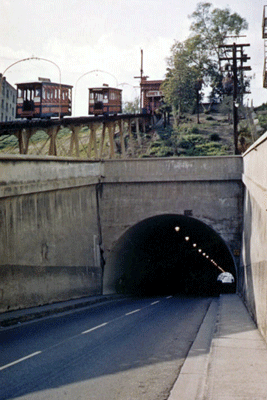 carnivals and since their lodge replaced the Crocker mansion at the top of Angels Flight in September 1908, they elected to donate this swell gate here around 1909. The BPOE lettering on the arch was actually covered up for many decades when the building above became a Moose lodge in 1926. Anyway, as the city moved west, the gingerbread private homes of the 1890s were cut up into rooming houses, and Bunker Hill took on all that charm we now call shabby chic. In 1950, large insurance companies, the Building Owners and Managers Association, and the Community Redevelopment Association proposed the razing of Bunker Hill to develop 10,000 rental units. In 1959 the City Council declared Bunker Hill blighted, a slum to be cleared and redeveloped. The Elks Lodge/Moose Lodge gets wiped away in 1962. In 1969 Angels Flight was finally removed and stored, with a promise to return it shortly. It was reinstalled here, half a block down, a mere twenty-seven years later, though a tragic accident in 2001 has closed it temporarily.”
carnivals and since their lodge replaced the Crocker mansion at the top of Angels Flight in September 1908, they elected to donate this swell gate here around 1909. The BPOE lettering on the arch was actually covered up for many decades when the building above became a Moose lodge in 1926. Anyway, as the city moved west, the gingerbread private homes of the 1890s were cut up into rooming houses, and Bunker Hill took on all that charm we now call shabby chic. In 1950, large insurance companies, the Building Owners and Managers Association, and the Community Redevelopment Association proposed the razing of Bunker Hill to develop 10,000 rental units. In 1959 the City Council declared Bunker Hill blighted, a slum to be cleared and redeveloped. The Elks Lodge/Moose Lodge gets wiped away in 1962. In 1969 Angels Flight was finally removed and stored, with a promise to return it shortly. It was reinstalled here, half a block down, a mere twenty-seven years later, though a tragic accident in 2001 has closed it temporarily.”
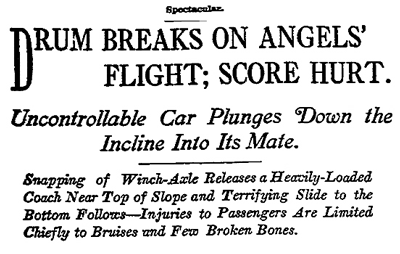 hoist busted, sending Sinai plummeting down the incline. The worst injury was actually a Mrs. Hostetter (of the
hoist busted, sending Sinai plummeting down the incline. The worst injury was actually a Mrs. Hostetter (of the 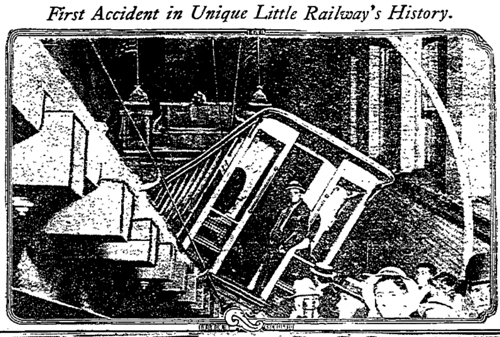

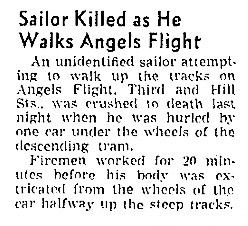
 hired an entity absurdly ill-suited to the task of restoring Angels Flight: Lift Engineering. Lift Engineering built ski lifts. Ski lifts that
hired an entity absurdly ill-suited to the task of restoring Angels Flight: Lift Engineering. Lift Engineering built ski lifts. Ski lifts that 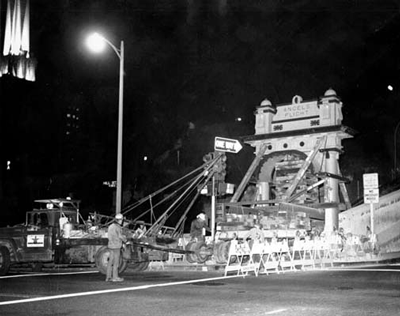
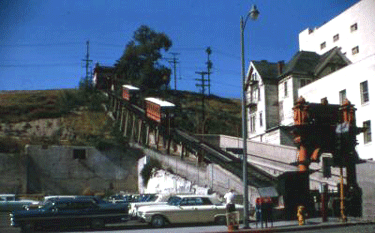 Certainly many breathed a sigh of relief. Gone was that clattering anachronism, garbed in the orange and black of an Edwardian Hallowe‘en, which could no longer connect the downmarket quaffers of cheap chop suey with the newly ensconced deadbolted seniors and senior bankers and the like.
Certainly many breathed a sigh of relief. Gone was that clattering anachronism, garbed in the orange and black of an Edwardian Hallowe‘en, which could no longer connect the downmarket quaffers of cheap chop suey with the newly ensconced deadbolted seniors and senior bankers and the like. 